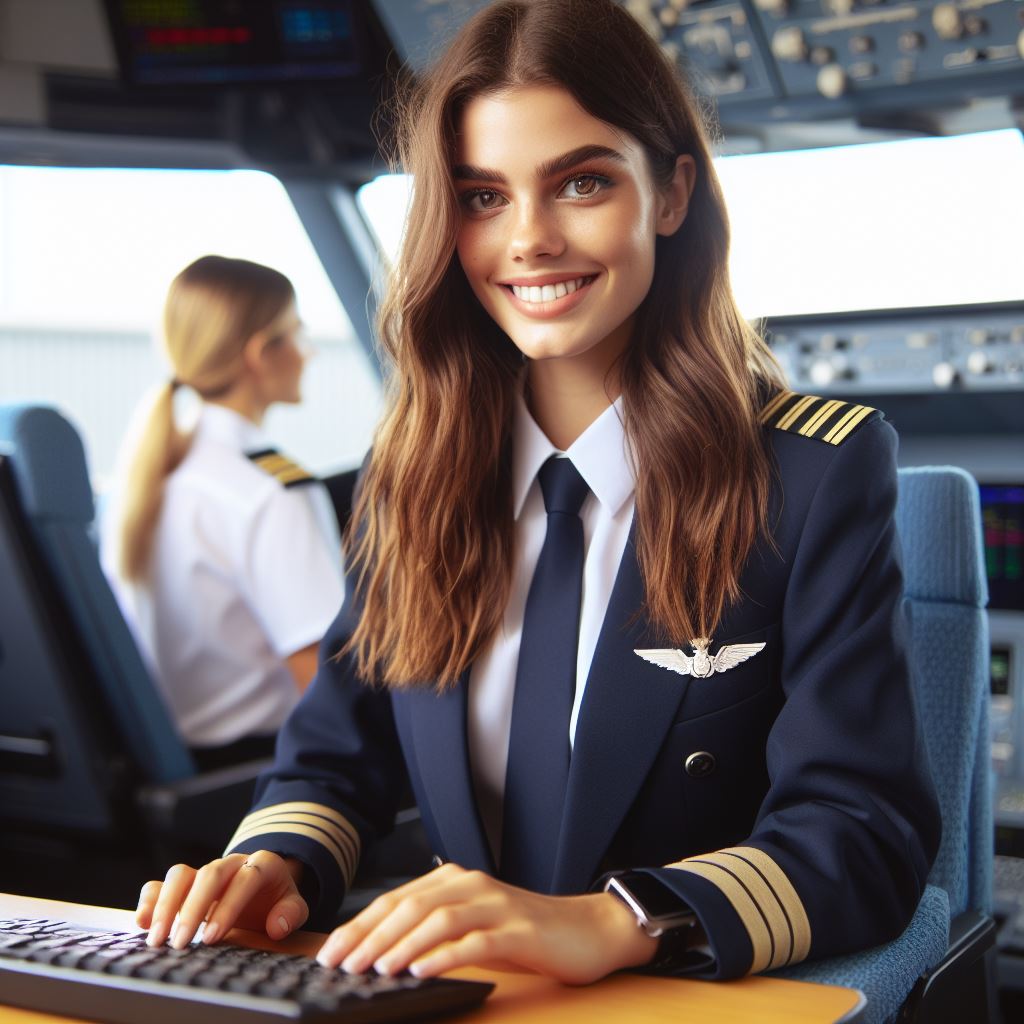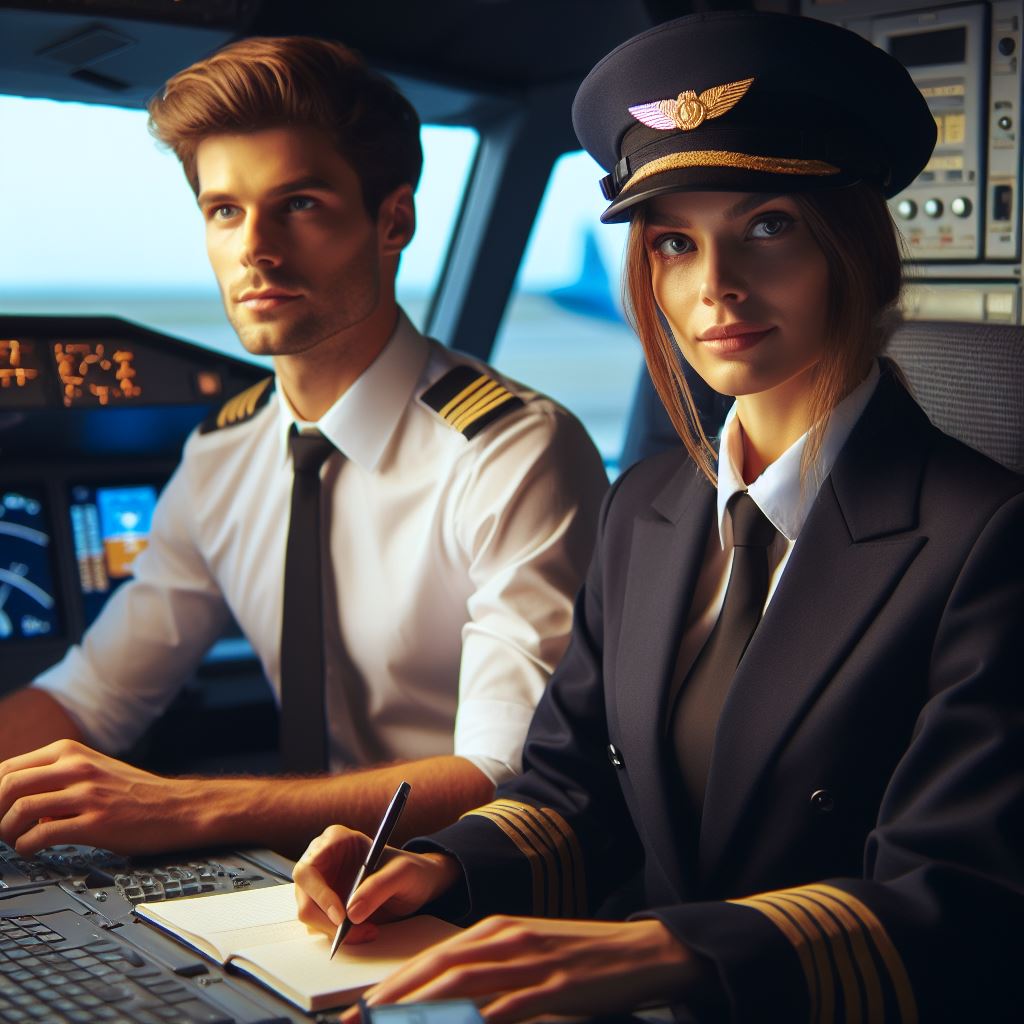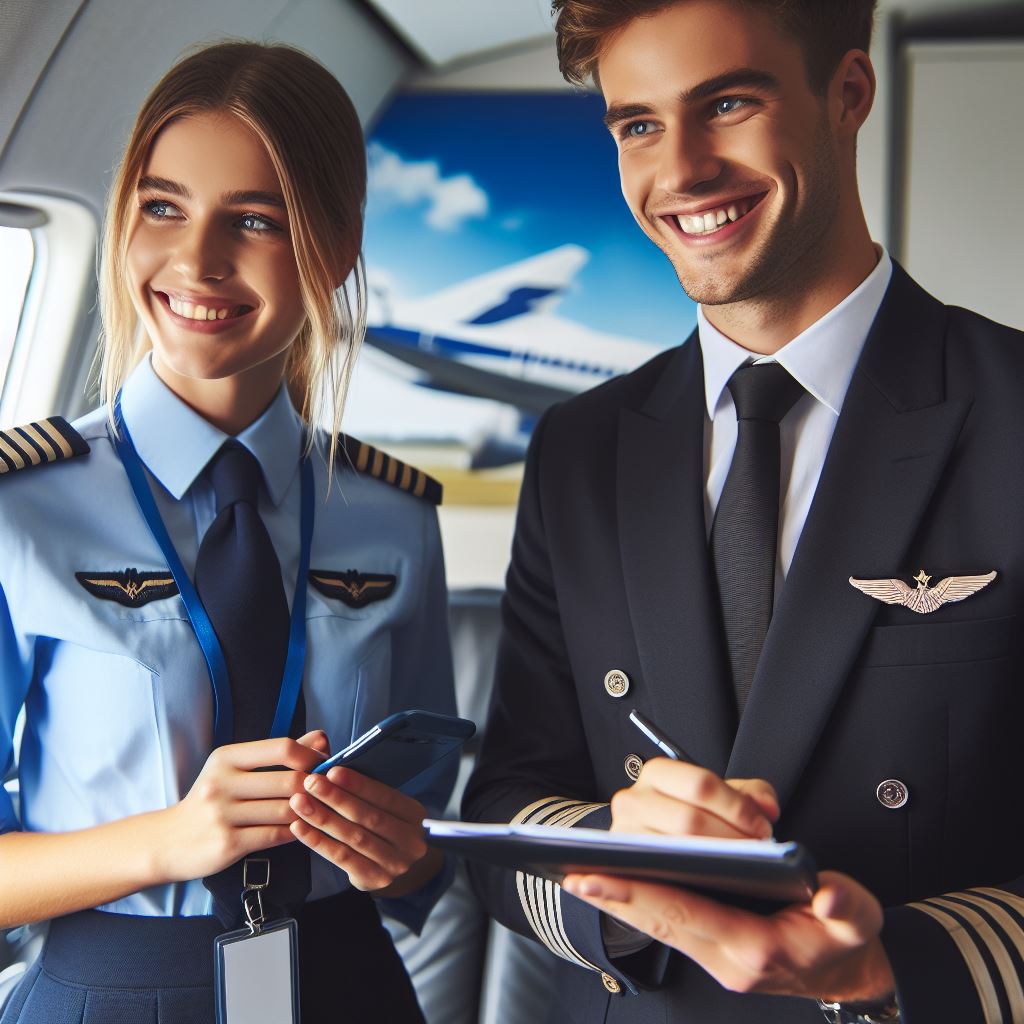Introduction
In the realm of aviation, women in Australia are increasingly making their mark as pilots.
Their presence is significant.
Breaking barriers and defying stereotypes, female pilots are reshaping the aviation industry landscape.
This section explores the journey of women in aviation, highlighting their achievements and contributions.
From flying small aircraft to commanding commercial jets, Australian women pilots are inspiring the next generation.
Their stories of perseverance, determination, and passion serve as motivation for aspiring female aviators.
Despite facing challenges and stereotypes, women pilots in Australia continue to soar to new heights.
Their roles extend beyond the cockpit, serving as mentors and advocates for gender equality in aviation.
Through their achievements, women pilots are paving the way for greater diversity and inclusion in the industry.
This section celebrates the accomplishments of Australian women in aviation, acknowledging their resilience and leadership.
Join us as we delve into the inspiring world of women pilots in Australia and their remarkable journeys.
Historical Background
Overview of women’s role in aviation historically
- Women have played a significant role in aviation throughout history, despite facing numerous challenges.
- In the early days, women were often restricted to supporting roles such as flight attendants or ground crew.
- However, their passion for flying and determination to break barriers led them to pursue pilot training.
Pioneering female aviators in Australia
- Australia has had its fair share of pioneering female aviators who defied gender norms.
- Nancy Bird Walton, often called the “Angel of the Outback,” was the first Australian woman to gain a commercial pilot’s license.
- Another notable figure is Maureen Zillman, who became the youngest female pilot in Australia at just 17 years old.
Challenges faced by women in the early days of aviation
Women in aviation defied societal norms, facing discrimination and limited opportunities in a male-dominated field.
Despite challenges, pioneers like Lores Bonney shattered barriers, inspiring future generations of female pilots.
During World War II, women proved their capabilities, filling critical roles in aviation previously held by men.
Post-war, organizations like the Australian Women Pilots’ Association provided support and networking opportunities.
Gradually, women gained acceptance and recognition, with initiatives promoting gender equality fostering progress.
Today, more women participate in aviation, thanks to organizations like Women in Aviation International.
Women excel in various aviation roles, from piloting commercial planes to aerospace engineering.
Their achievements inspire women worldwide, emphasizing resilience and determination in pursuing dreams.
Australian female pilots’ legacies ensure that gender barriers will never limit aspirations in aviation.
Basically, women in aviation have faced numerous challenges throughout history but have persistently broken barriers.
From the early days of limited roles to becoming pioneering aviators, Australian women have overcome societal expectations and discrimination. Through their achievements, they continue to inspire and empower future generations of female pilots.
Current Landscape
Statistics on women in the aviation industry in Australia
- Only 2% of commercial pilots in Australia are women.
- There are approximately 225 female pilots in Australia out of a total of 11,400 pilots.
- Out of the 160,000 licensed aircraft engineers in Australia, only 600 are women.
- Only 12% of air traffic controllers in Australia are women.
Representation of women in various roles (pilots, engineers, air traffic controllers, etc.)
- Pilots: Despite recent improvements, women still only make up a small percentage of pilots in Australia.
- Engineers: The representation of women in this field is extremely low.
- Air Traffic Controllers: Women only account for a small portion of air traffic controllers in the country.
Progress made in recent years
- Aviation organizations have implemented initiatives to encourage women to pursue careers in aviation.
- Aviation scholarship programs have been established to support young women in pursuing their pilot training.
- Efforts have been made to challenge gender stereotypes and create a more inclusive environment in the industry.
- There has been an increase in networking opportunities and mentorship programs for women in aviation.
- Aviation companies have started actively promoting diversity and inclusion in their recruitment and hiring practices.
- Various aviation organizations have organized events to celebrate and highlight the achievements of women in the industry.
- Increased media coverage and awareness have shed light on the challenges faced by women in aviation.
- The government has introduced policies and initiatives to encourage more women to pursue careers in the industry.
- More female role models in aviation have emerged, inspiring younger generations to consider aviation as a career option.
The progress made in recent years indicates a shift towards a more gender-balanced aviation industry in Australia, but there is still a long way to go.
By continuing to support and empower women in aviation, the industry can break down barriers and create a more diverse and inclusive workforce.
Challenges and Barriers
Gender stereotypes and bias
- Women in aviation often face gender stereotypes that portray them as less capable than their male counterparts.
- Bias against women in male-dominated industries like aviation can hinder their career progression.
- The perception that flying is a masculine profession results in limited opportunities and unequal treatment for women pilots.
- Gender stereotypes and bias discourage young girls from pursuing their dreams of becoming pilots.
Societal and cultural factors affecting women in aviation
- Society’s expectations of women as primary caregivers and nurturers often clash with the demands of a pilot’s career.
- The lack of flexible work options and family-friendly policies make it difficult for women pilots to balance work and personal responsibilities.
- The absence of proper support networks and mentorship programs contributes to the underrepresentation of women in aviation.
- Cultural norms that value physical strength and endurance over other skills disadvantage women in aviation.
Myths and misconceptions about women as pilots
- The belief that women lack the necessary spatial awareness and technical skills for flying persists despite evidence to the contrary.
- Many people wrongly assume that women lack the ambition and drive required to succeed in the aviation industry.
- The misconception that women cannot handle the physical demands of flying perpetuates the idea that they are unsuitable for the profession.
- False notions about women’s emotional stability and decision-making abilities undermine their credibility as pilots.
Addressing and Overcoming the Challenges
To combat the challenges and barriers faced by women in aviation, several measures can be taken:
- Educating and raising awareness: Efforts should be made to educate society about the capabilities and potential of women in aviation. This can be done through school programs, media campaigns, and community outreach initiatives.
- Promoting diversity and inclusion: Airlines and aviation organizations should actively promote diversity and inclusion by setting recruitment targets for women pilots. This can help create a more inclusive and welcoming environment for female aviators.
- Removing bias in hiring and promotions: Employers must ensure that hiring and promotion processes are fair and free from gender bias. This can be achieved through gender-neutral selection criteria and objective performance evaluations.
- Providing mentorship and support: Establishing mentorship programs for women in aviation can offer guidance, support, and networking opportunities. Engaging successful women pilots as mentors can help aspiring female aviators navigate their careers effectively.
- Advocating for family-friendly policies: Airlines and aviation regulatory bodies should implement policies that support work-life balance for women pilots. This includes provisions for maternity leave, flexible work arrangements, and childcare assistance.
- Challenging stereotypes: By actively challenging and debunking gender stereotypes about women pilots, society can change its perceptions and pave the way for more women to enter the aviation industry.
Despite the challenges and barriers they face, women in aviation continue to break barriers and excel in their field.
By addressing gender stereotypes, societal and cultural factors, and misconceptions about women as pilots, we can create a more inclusive aviation industry that harnesses the full potential of all its members.
It is crucial to advocate for equal opportunities and support mechanisms to encourage more women to pursue their dreams of flying and contribute to the advancement of aviation.
Read: How to Become a Train Driver in Australia
Breaking Barriers: Inspirational Stories
Women in aviation have been breaking barriers and paving the way for future generations, proving that the sky is not the limit for their aspirations.
In this section, we will explore the inspiring stories of Australian female pilots who have made significant contributions to the aviation industry.
Profiles of successful Australian female pilots
Captain Deborah Lawrie
Captain Deborah Lawrie, also known as “The Accidental Pilot,” made history by challenging discriminatory practices in the aviation industry.
In 1979, she fought a legal battle against Ansett Airlines, who initially denied her a position as a pilot due to her gender. Her determination and resilience eventually led to her becoming Australia’s first female pilot for a major airline.
Captain Kirsty Pearce
Captain Kirsty Pearce is a pioneer in her field. She became one of the first female pilots to fly in the Royal Flying Doctor Service (RFDS), playing a vital role in providing medical assistance to remote communities across Australia.
Her dedication to saving lives and breaking gender stereotypes has inspired many aspiring female pilots.
Overcoming obstacles and achieving milestones
Marree Manion
Marree Manion is a true testament to perseverance. Despite facing numerous challenges, including financial constraints and lack of support, she pursued her passion for flying and became a successful aviation instructor.
Marree’s journey serves as an inspiration for young women aspiring to overcome obstacles and achieve their dreams.
Samantha Buckley
Samantha Buckley is a remarkable pilot who has defied odds and shown immense courage. Overcoming a significant hearing impairment, she obtained her private pilot’s license and went on to achieve commercial proficiency.
Samantha’s story demonstrates that determination and self-belief can triumph over any obstacle.
Increased visibility of women in aviation
Female Flight Crew Organizations
The establishment of organizations such as the Australian Women Pilots’ Association (AWPA) has played a pivotal role in increasing the visibility of women in aviation.
These platforms provide female pilots with opportunities to network, share experiences, and support one another, ultimately breaking barriers and promoting gender equality in the industry.
Aviation Scholarships and Mentoring Programs
Australian aviation organizations and associations have introduced scholarships and mentoring programs to encourage young women to pursue careers in aviation.
These initiatives provide financial support, mentorship, and resources necessary to nurture talent and empower future generations of female pilots.
Generally, the stories of these remarkable Australian female pilots showcase their unwavering determination, resilience, and passion for aviation.
By breaking barriers, overcoming obstacles, and increasing visibility of women in the field, they inspire and empower others to pursue their dreams fearlessly. The aviation industry continues to evolve, thanks to the invaluable contributions of these trailblazing women.
Your Personalized Career Strategy
Unlock your potential with tailored career consulting. Get clear, actionable steps designed for your success. Start now!
Get StartedRead: Day in the Life of an Aussie Train Driver

Uncover the Details: Fuel Efficiency Tips for Truck Drivers
Initiatives and Support
Organizations and programs promoting gender equality in aviation
- The Australian Women Pilots’ Association (AWPA): Dedicated to supporting and encouraging female pilots through various initiatives.
- The Australian Women in Aviation Association (AWIAA): Advocating for gender equality and promoting women’s participation in the aviation industry.
- The Women in Aviation/Aerospace Australia (WAI Australia): Focusing on advancing women’s careers and opportunities in the aviation and aerospace sectors.
- The Girls in Aviation Day: Organized globally to introduce young girls to aviation and inspire them to pursue a career in this field.
- The Women of Aviation Worldwide Week: Promoting the participation and achievements of female in all aspects of aviation.
Mentorship and support networks for aspiring female aviators
- Aviatrix Project: Providing mentoring, scholarship, and leadership opportunities to help young women pursue aviation careers.
- Women in Aviation International: Offering mentorship programs connecting aspiring female aviators with experienced professionals.
- Australian Women in New South Wales Aviation (AWAM): Enabling networking and peer support for women in the aviation industry.
Scholarships and financial assistance opportunities
- The British Women Pilots Association (BWPA) Scholarship: Providing funds to support training and education for female pilots.
- The Australian Aviation Hall of Fame (AAHOF) Scholarship: Offering financial support to female students pursuing aviation-related studies.
- The Amelia Earhart Memorial Scholarship Fund: Assisting women who want to obtain advanced ratings or certifications.
- The Women in Aviation/Aerospace Australia Scholarship Program: Granting financial aid to female students pursuing careers in aviation and aerospace.
- The Nancy Bird Walton Memorial Scholarship: Awarded to young female pursuing tertiary education in aviation-related fields.
These organizations, programs, mentorship networks, and scholarships contribute significantly to breaking barriers for female in aviation.
By providing support, resources, and opportunities, they empower aspiring female aviators to pursue their dreams and achieve success in the industry.
Read: Trucker Tales: Stories from the Road
Future Outlook
Steps to further encourage women in aviation
- Introduce more scholarships and funding opportunities specifically for female in aviation.
- Collaborate with schools to promote aviation as a career option for girls from a young age.
- Create mentorship programs to provide guidance and support for aspiring female pilots.
- Host networking events and conferences that bring together women in the aviation industry.
- Increase the visibility of successful female pilots through media coverage and documentaries.
Potential impact of increased gender diversity in the industry
- Enhanced innovation and problem-solving due to diverse perspectives and ideas.
- Improved safety outcomes as a result of different approaches to risk assessment and decision-making.
- Increased passenger satisfaction through a more diverse and inclusive workforce that reflects the customer base.
- Economic growth and expansion of the industry by tapping into the talents and potential of a larger pool of professionals.
- Breaking gender stereotypes and inspiring future generations of women to pursue careers in aviation.
Role of the aviation industry in promoting inclusivity
- Implement policies and initiatives that prioritize diversity and inclusion in hiring and promotions.
- Provide equal opportunities for women to access training and career advancement.
- Develop strategies to address unconscious bias and foster an inclusive culture within organizations.
- Support employee resource groups and diversity networks to promote dialogue and awareness.
- Collaborate with government and education institutions to address systemic barriers and create a more inclusive industry.
Ultimately, the future outlook for women in aviation holds great promise. By implementing targeted measures to encourage women’s participation, promoting gender diversity within the industry, and actively championing inclusivity, we can create a more equal and thriving aviation sector.
The time has come to break barriers, shatter glass ceilings, and embrace the invaluable contributions of women in aviation. Let us join forces to soar to greater heights together.
Read: Salary Insights for Train Drivers in Oz
You Might Also Like: Case Study: Efficient Logistics in Australia
Conclusion
In closing, the stories of Aussie women pilots breaking barriers in aviation are truly inspiring. From Amanda to Deborah, these women have shown immense courage and determination in pursuing their dreams.
They have proven that gender should never be a limitation for anyone in the aviation industry.
It is important to celebrate the accomplishments of female in aviation as it not only recognizes their individual achievements but also serves as a source of inspiration for future generations.
By highlighting their success, we inspire other female and girls to consider careers in aviation, showcasing the endless possibilities and opportunities that exist for them.
Supporting and empowering women in the industry is crucial for its growth and development.
We must continue to provide equal opportunities, mentorship programs, and other resources to encourage more female to enter and thrive in aviation.
Organizations and institutions should actively work towards promoting diversity and inclusion in the industry.
Stand Out with a Resume That Gets Results
Your career is worth more than a generic template. Let us craft a resume and cover letter that showcase your unique strengths and help you secure that dream job.
Get HiredFurthermore, it is important to challenge stereotypes and biases that may discourage female from pursuing careers in aviation.
Together, we can create a more inclusive and diverse aviation industry where women are celebrated for their achievements and contribute their skills and talents.
Let us join hands and support the journey of female in aviation, empowering them to reach for the skies and break even more barriers.




